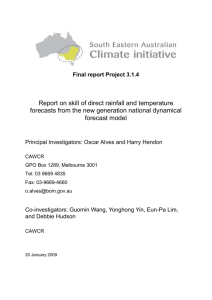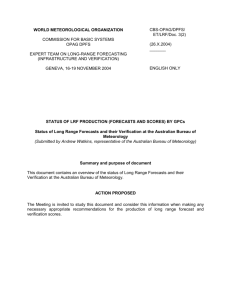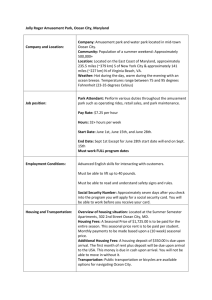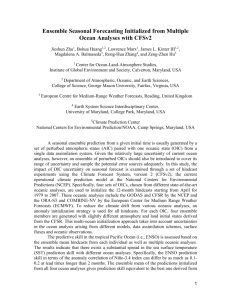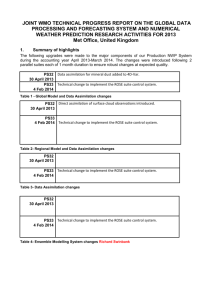Status of GPC Melbourne
advertisement
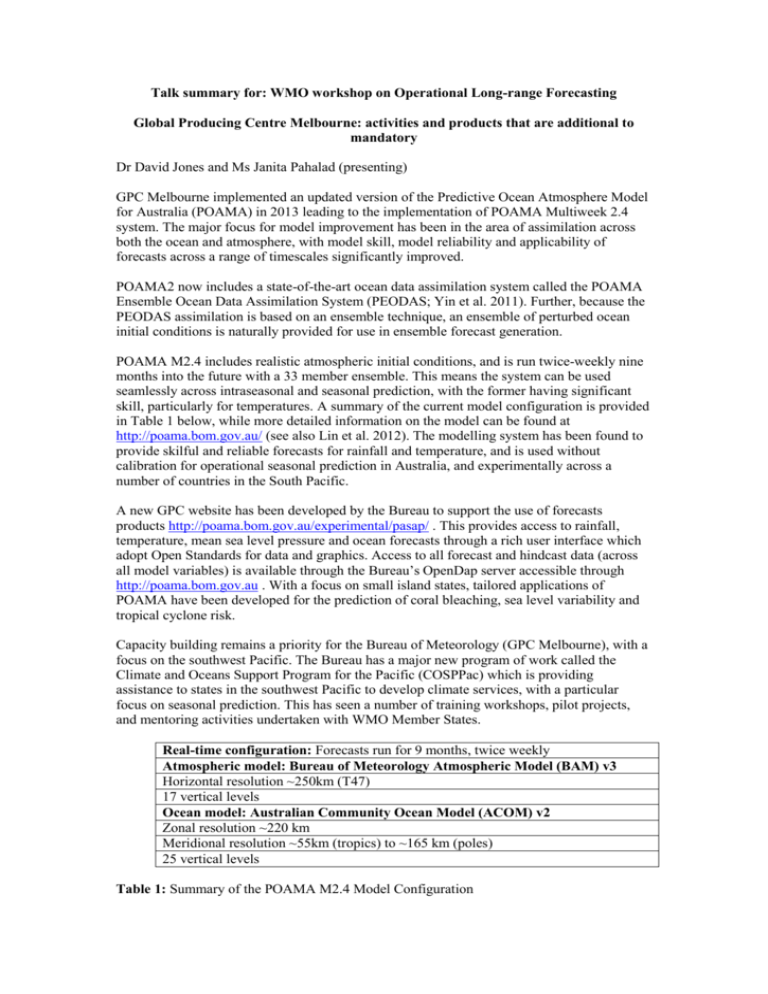
Talk summary for: WMO workshop on Operational Long-range Forecasting Global Producing Centre Melbourne: activities and products that are additional to mandatory Dr David Jones and Ms Janita Pahalad (presenting) GPC Melbourne implemented an updated version of the Predictive Ocean Atmosphere Model for Australia (POAMA) in 2013 leading to the implementation of POAMA Multiweek 2.4 system. The major focus for model improvement has been in the area of assimilation across both the ocean and atmosphere, with model skill, model reliability and applicability of forecasts across a range of timescales significantly improved. POAMA2 now includes a state-of-the-art ocean data assimilation system called the POAMA Ensemble Ocean Data Assimilation System (PEODAS; Yin et al. 2011). Further, because the PEODAS assimilation is based on an ensemble technique, an ensemble of perturbed ocean initial conditions is naturally provided for use in ensemble forecast generation. POAMA M2.4 includes realistic atmospheric initial conditions, and is run twice-weekly nine months into the future with a 33 member ensemble. This means the system can be used seamlessly across intraseasonal and seasonal prediction, with the former having significant skill, particularly for temperatures. A summary of the current model configuration is provided in Table 1 below, while more detailed information on the model can be found at http://poama.bom.gov.au/ (see also Lin et al. 2012). The modelling system has been found to provide skilful and reliable forecasts for rainfall and temperature, and is used without calibration for operational seasonal prediction in Australia, and experimentally across a number of countries in the South Pacific. A new GPC website has been developed by the Bureau to support the use of forecasts products http://poama.bom.gov.au/experimental/pasap/ . This provides access to rainfall, temperature, mean sea level pressure and ocean forecasts through a rich user interface which adopt Open Standards for data and graphics. Access to all forecast and hindcast data (across all model variables) is available through the Bureau’s OpenDap server accessible through http://poama.bom.gov.au . With a focus on small island states, tailored applications of POAMA have been developed for the prediction of coral bleaching, sea level variability and tropical cyclone risk. Capacity building remains a priority for the Bureau of Meteorology (GPC Melbourne), with a focus on the southwest Pacific. The Bureau has a major new program of work called the Climate and Oceans Support Program for the Pacific (COSPPac) which is providing assistance to states in the southwest Pacific to develop climate services, with a particular focus on seasonal prediction. This has seen a number of training workshops, pilot projects, and mentoring activities undertaken with WMO Member States. Real-time configuration: Forecasts run for 9 months, twice weekly Atmospheric model: Bureau of Meteorology Atmospheric Model (BAM) v3 Horizontal resolution ~250km (T47) 17 vertical levels Ocean model: Australian Community Ocean Model (ACOM) v2 Zonal resolution ~220 km Meridional resolution ~55km (tropics) to ~165 km (poles) 25 vertical levels Table 1: Summary of the POAMA M2.4 Model Configuration References Lim, E-P., Hendon, H.H., Langford, S. and Alves, O., 2012. Improvements in POAMA2 for the prediction of major climate drivers and south eastern Australian rainfall. CAWCR Technical Report No. 051 Yin, Y., O. Alves, and P. R. Oke, 2011. An ensemble ocean data assimilation system for seasonal prediction. Mon. Wea. Rev., 139, 786-808.
